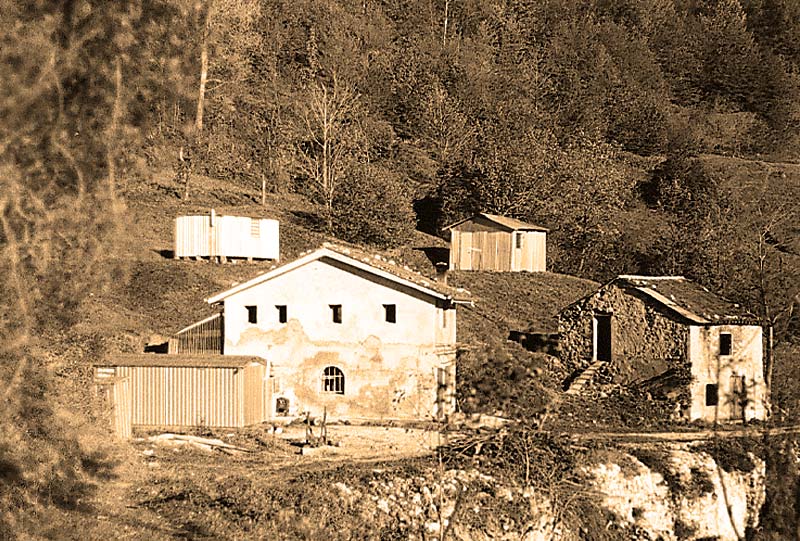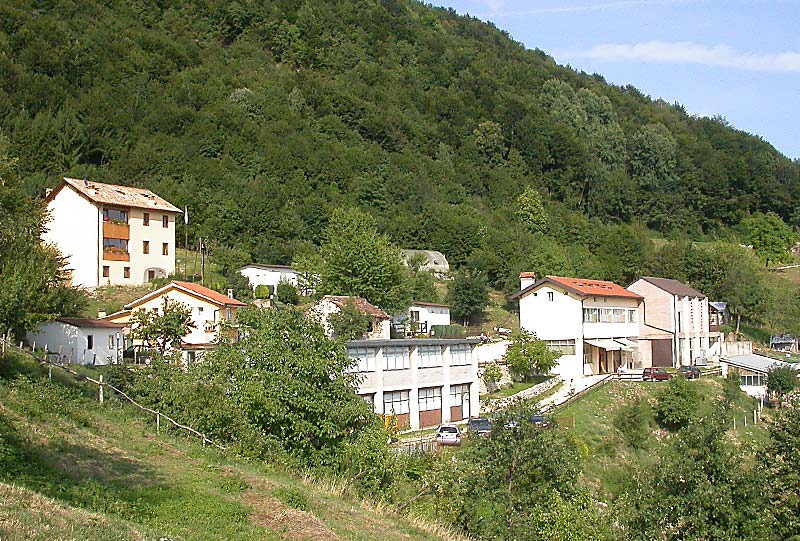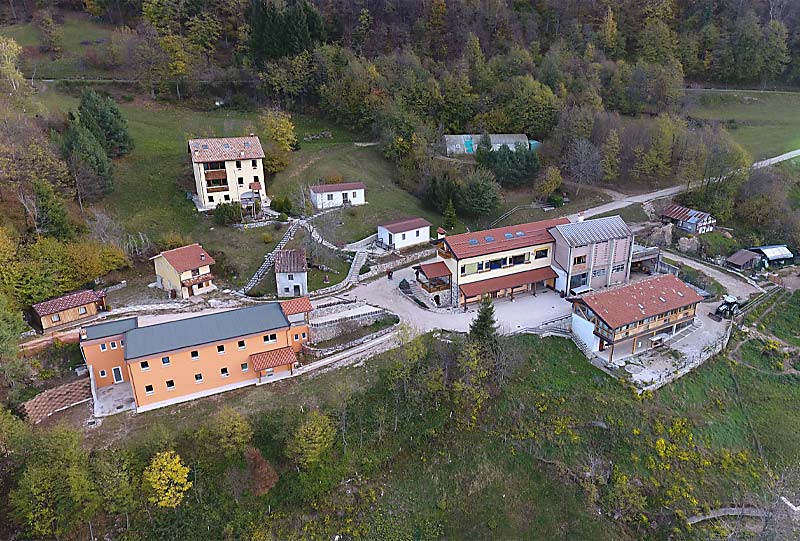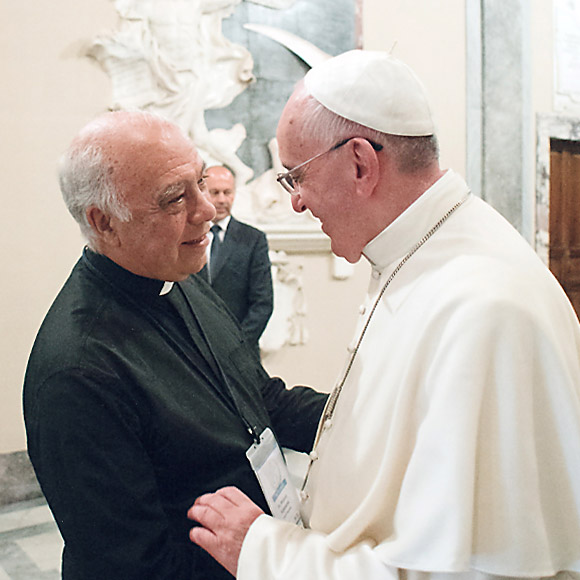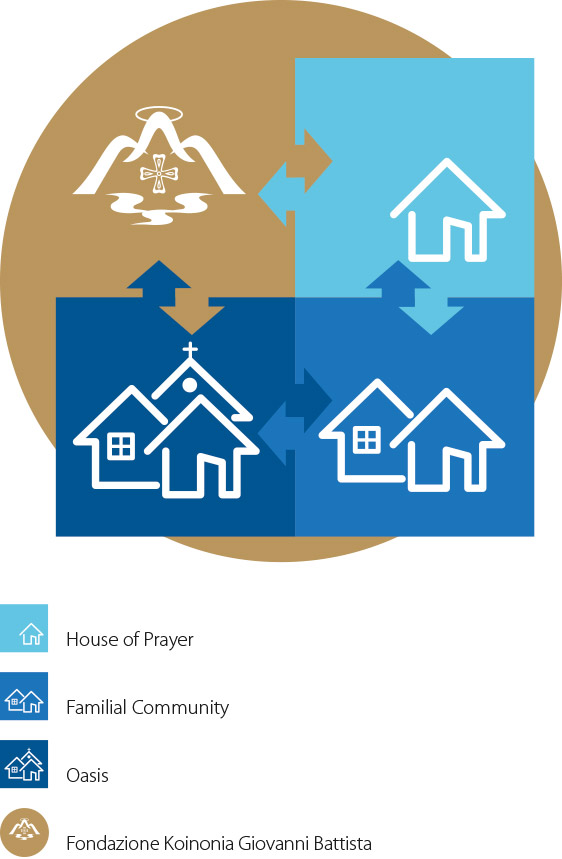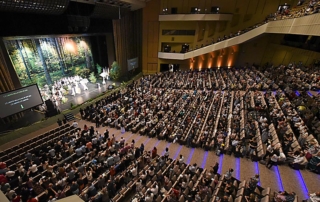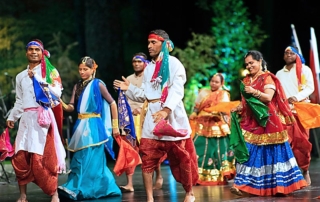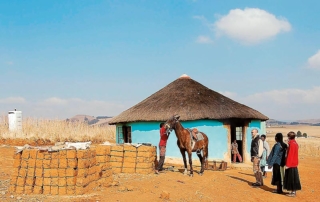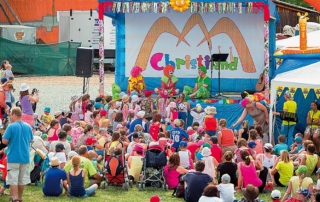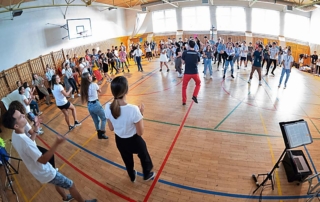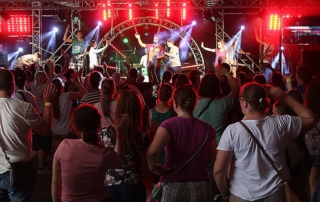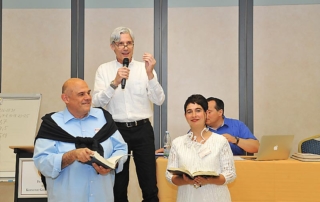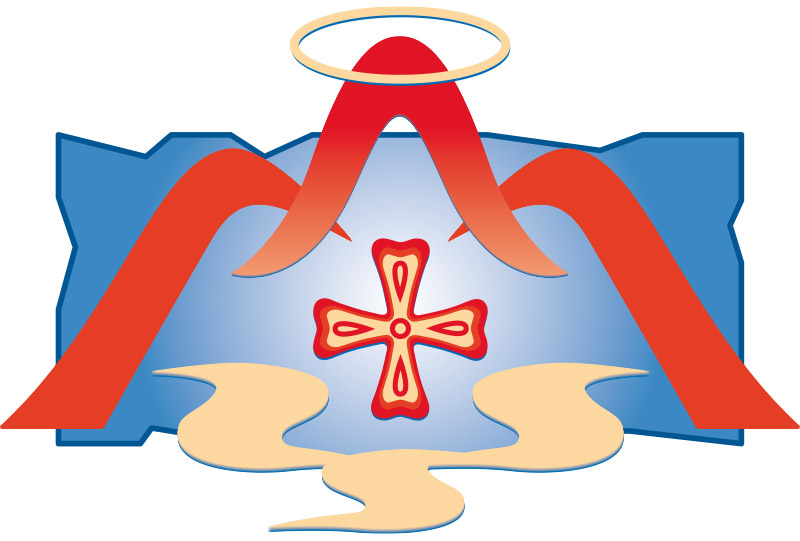CHARISM
The charism of Koinonia John the Baptist is the promotion of the New Evangelisation, an evangelisation new in its ardour, methods and expression. This is done by focussing on three main aspects: proclamation of the kerygma, use of the spiritual charisms, and life in community.
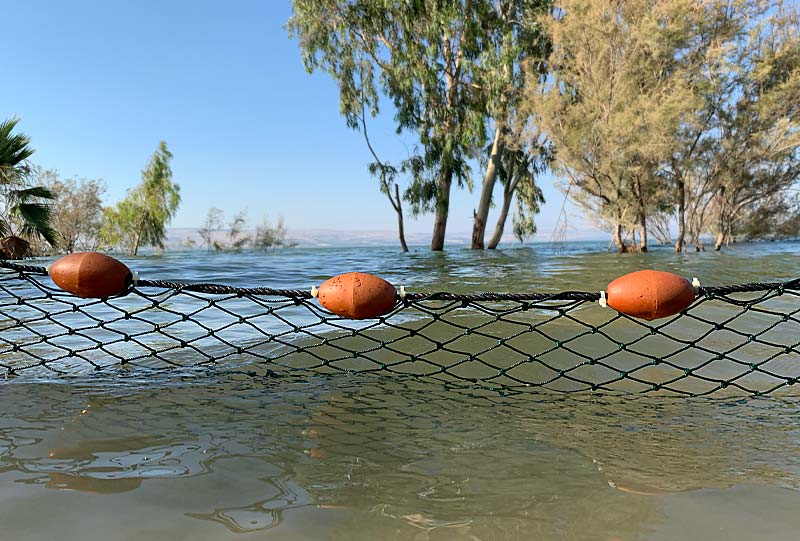
HISTORY
The community was founded in 1979 by Fr. Ricardo Argañaraz, an Argentinian priest. Following a powerful experience of the Holy Spirit, he withdrew in retreat to an abandoned settlement, called Camparmò, in the mountains of Vicenza. There he began a life devoted to prayer, manual work and study, and was soon joined by other brothers and sisters who shared his desire to consecrate their lives to the Lord.
In the solitude, characteristic of those early years, certain foundational elements were established for this new community. These included prayer, attentiveness to the Word of God, the experience of the gifts of the Holy Spirit, fraternal friendship, acceptance and welcome of brothers and sisters, openness in sharing and trust in the providential hand of God the Father.
The community was officially founded on the Solemnity of Mary, Mother of God, 1st January 1979, during a pilgrimage to the ‘Holy House’ in Loreto. After the early years of complete solitude, the community gradually increased their pastoral activities, forming communities devoted to evangelisation and to the formation of evangelisers.
Fr. Ricardo Argañaraz was born on 3rd July 1936, in the Argentinian city of Salta. Following a powerful conversion, in 1954 he entered the diocesan seminary. On 15th July 1962 he was ordained to the priesthood. Following ordination he was sent for further studies in Philosophy and Canon Law at the pontifical universities in Rome, where he had the opportunity to be present for the opening of the Second Vatican Council.
He graduated in philosophy and received his doctorate in Canon Law in 1969. After two years of service in the Vatican’s Secretariat of State he felt drawn to contemplative life. Following this calling, he co-founded a priestly fraternity with some other priests.
During 1974 and 1975, Fr. Ricardo had various experiences of the outpouring of the Holy Spirit, demonstrated with the manifestation of the charismatic gifts. After two months of solitude on Mount Pasubio, he received the inspiration to found a new community. On 19th September 1975, he arrived at Camparmò for the first time. That uninhabited settlement in Valli del Pasubio in the province of Vicenza would be the place where he would establish this new community.
After living alone for about three years, the community’s first vocations arrived. The first community nucleus took shape at Camparmò. Over the years, this community would be the model for subsequent foundations, first in Italy and then in various places around the world.
In 1999, Fr. Ricardo withdrew from every role and position of governance within the community.
STRUCTURE
Koinonia John the Baptist is made up of individual communities. Each of these is called an Oasis.
The Oasis is made up of a community of Consecrated Life, familial communities, and houses of prayer. It can also include a Reality and/or a community of family life. The Oasis is the most complete form of community life. It consists of the stable presence of a leader (called a Pastor) from the community of consecrated life, together with consecrated brothers and sisters, as well as a Koinonia structured as laid out above, with houses of prayer, familial communities and ministries.
A Reality consists of the stable presence of a married or celibate leader (called a Reality Coordinator), and a Koinonia structured as laid out above, with houses of prayer, familial communities and ministries. Belonging to an Oasis, the Reality is managed in communion with the Pastor.
The house of prayer is that foundational cell for all the activities of Koinonia John the Baptist. It takes place on a weekly basis in the private homes of Koinonia members. These members hold encounters of evangelisation in small groups, directed at those who are distant from the faith.
The familial community is a small covenant community formed by members grouped together in a given area or region. While each member lives in their own home, they participate in the activities and service of the Koinonia to which they belong. They gather together monthly in gatherings known as Agapitos.
Communities of family life bring families together that desire to live closely together in a more intense community life.
Communities of Consecrated Life bring together brothers and sisters, each professing the Evangelical Counsels of chastity, poverty and docility. In the climate of community life, everything is shared in common.
Each diverse Koinonia spread throughout the world are constituted as ‘Private Associations of the Faithful’, welcomed and canonically recognised by the local Ordinary. They are jurdically united in a foundation, the Fondazione Koinonia Giovanni Battista, with its legal head office in Italy and its pastoral head office in Israel.
MINISTRY
Each Koinonia organises periodic gatherings, with the aim of creating and intensifying the communion between their members and their drive for evangelisation. Other activities are organised beyond this. These might have pre-evangelisation, evangelisation, or formation as their objective.
FORMATION
The formation structure in Koinonia John the Baptist aims to give life to a progressive, systematic and integral programme with the objective to form evangelisers who are capable of passing on a KeKaKo mentality. This is a Christ-centred and positive mentality, which is open to both the charismatic and community dimension. Prayer, study, workshops/opportunities to put learning into practice and community life are the key guidelines to our formation programme.
This formation structure comprises 3 organic and interlinked levels:
The Foundation Level consists of the School of Evangelisation, the task of which is to teach participants to transmit the ability to proclaim the Gospel in a way that is simple, effective and creative. This formation takes place through a progressive ‘journey’ of a variety of courses.
The Intermediate Level takes place in various pontifical faculties. It consists of a two year course in philosophy and a three year course in theology, finishing with the award of a Bachelor’s Degree in Theology.
The Advanced Level offers further studies in pontifical faculties leading to the achievement of the license (equivalent to Masters) or doctorate in philosophy and/or theology.
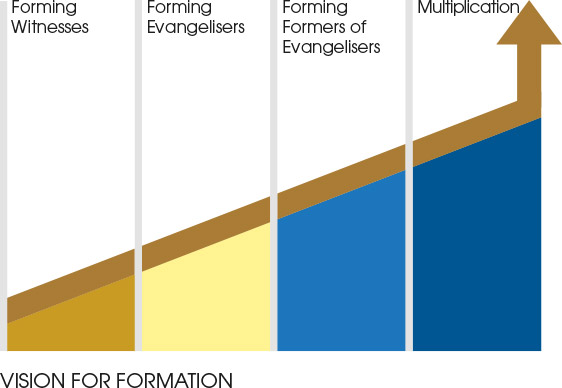
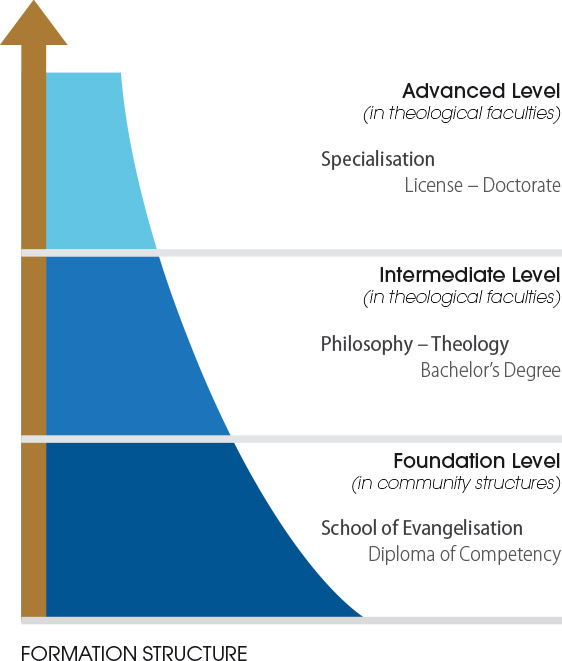
EMBLEM
The emblem of the community is composed of four different elements:
- The three mountains are a reminder of the stability of community life and of Camparmò, the place where our community was born.
- The red and gold Cross at the heart of the emblem points us to Jesus, risen from the dead. He is the centre of our being and of everything that we do.
- The ellipse encircling the summit of the central mountain calls us to our life of prayer, of contemplation.
- The river flowing through the valley reminds us of our mission to evangelise.

